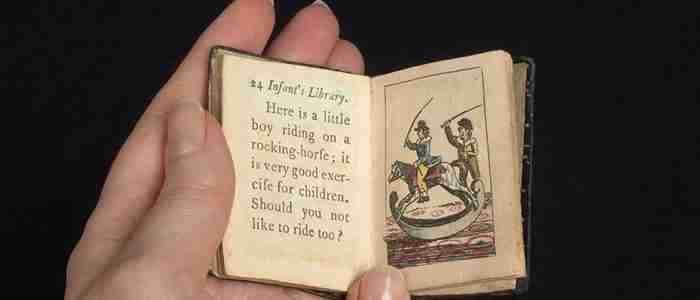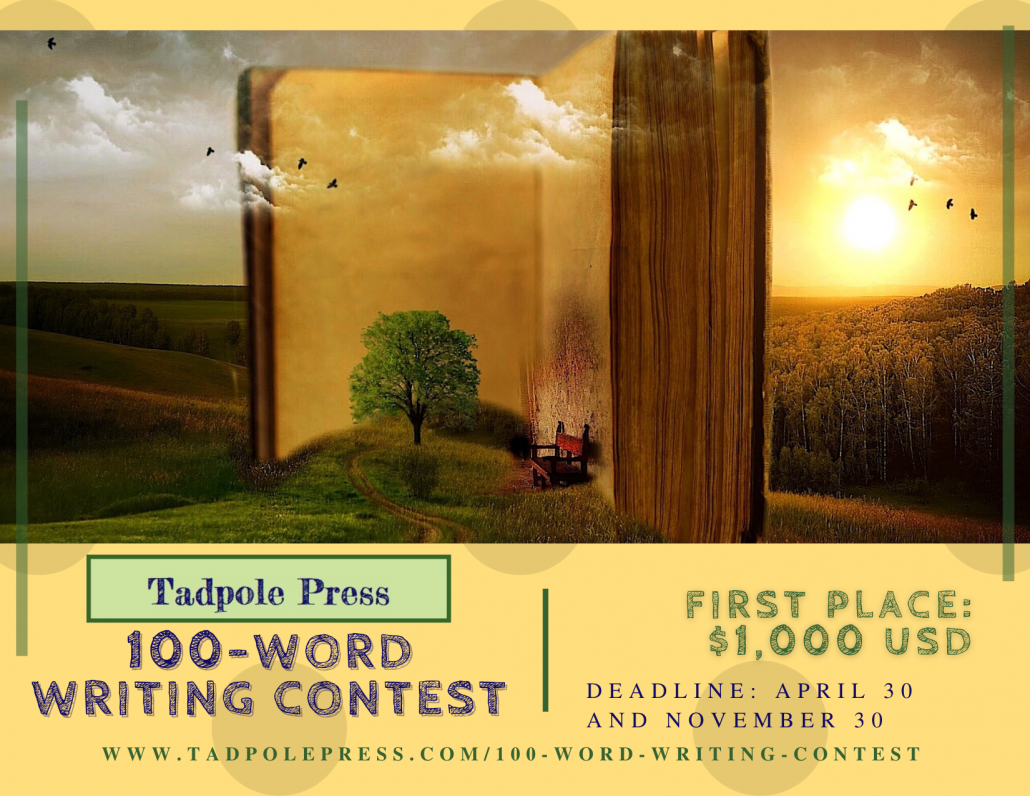
A microfiction contest can be an alternative to novel writing in November
by Amber Byers
November is here, and many writers have jumped into National Novel Writing Month (NaNoWriMo), an international writing event in which writers challenge themselves to write an entire book, or 50,000 words, in the month of November.
As anyone who has ever joined a quiet writing group knows, there’s power in writing together. Your energy is amplified by the energy of the other writers around you. You become less interested in browsing hilarious cat memes on the internet. And you’re more focused on putting words on the page. This is what makes NaNoWriMo so successful.
But for those writers who aren’t trying to complete an entire novel this month, how can you still get in on the coveted energy boost, accountability, and community spirit of creativity?
Think Smaller: About Microfiction
Remember it doesn’t have to be all or nothing. November can still be a powerful month to move your writing goals forward. Maybe you just need to think smaller. A lot smaller. Rather than trying to write an entire novel this month, perhaps a more realistic goal for you would be to explore microfiction.
First of all, if you’re not familiar with microfiction, flash fiction, or microstories, all you need to know is that they’re different ways of saying writing that is very short. Like anywhere from 5 to 5,000 words short, with most genres falling somewhere between 100 and 1,000 words.
For most writers, the most challenging aspect of writing in these genres stems from figuring out how to pare your story down to the essentials, rather than how to fill up the space. Instead of staring at an empty page and being overwhelmed by the amount of work it will take to create an entire novel, it can be inspiring to figure out how to tell a complete story in just a few lines.
A Fun Way to Challenge Yourself as a Writer
What makes microfiction unique is the same thing that makes it especially enjoyable — its length. Because these are such short pieces, the length is very doable for most writers. In fact, by focusing on limiting yourself to a maximum word count instead of a minimum word count, you may quickly realize just how many words you write — and how many more words you wish you had!
Many writers start by writing a small story several times longer than the word limit. For instance, if you have a 100-word limit, it’s common to have your first draft be upward of 200 words. After a few revisions, you may start to get attached to your story only to find that it’s still 150 words or more.
Figuring out which parts you can cut while still maintaining the essence of what makes your story captivating is what makes writing microfiction such a fun challenge. Watching your story change as you simplify it is enlightening and gives you a unique perspective on what the soul of your story is really comprised of.
Plus, finding flash and microfiction contests is a great way to submit your writing that doesn’t take too much time, energy, or financial commitment. And by writing teeny pieces, it reminds you that you are still a writer even if you’re not currently writing an entire novel.
How Do You Tell a Compelling Story That Impacts the Reader When You Only Have 100 Words?
So you love the idea of writing microfiction and you’re ready to give it a try. But how do you make the most of the few words you have? Here are some of our favorite tips for writing in this unique style:
Show, don’t tell.
When you show something with your writing instead of simply telling the reader about it, you invite the reader into your story in a more vivid, visceral way that allows them to experience what’s happening rather than reading a summary from the outside. This brings the story alive and deepens the impact.
Write with your five senses.
Focusing on sight, sound, taste, touch, or smell is a quick, direct way to bring the reader into the story. Plus, words that highlight our senses have a powerful effect on the reader’s experience and connection to your writing.
Evoke images, elements, colors, and/or emotions.
This helps the reader see, feel, and remember your story after they’ve put it down. Remember the old adage “A picture is worth a thousand words”? When you choose language that creates a powerful image in the reader’s mind, you maximize the value of your selected words.
Write from a place of emotional connection.
Writing is typically easier and the story more electrified when the writer’s emotions match those of the character they’re currently writing about. So if your character is discouraged in the scene, but you’re joyful and lighthearted, it may not mesh well and could be difficult to write convincingly about the character’s struggle.
How are you feeling right now? Angry, exhausted, relieved, hopeful, silly? What’s a situation that you can create about a character with that same emotion? Or, if you already know what emotion your character is feeling, wait to write about it until you’re also experiencing it.
Be simple and concise.
Distill your story down to just the basics. Cut the fluff.
Tell a complete and compelling story.
Give enough background to set the scene, engage the reader, and create a framework to tie it all together. Create character depth succinctly. Figure out what the reader needs to know about your character and focus on that.
Check your stereotypes.
When you’re writing such a short piece, it can be tempting to rely on stereotypes to fill in the details. However, your writing not only validates how you see the world but also reflects what other people think is possible and ultimately shapes the way the world will be.
So look for your biases. Are they intentional or implicit? Do you want to leave them there or change them? You have precious space, so which characters get priority? How would your story look if you changed a character’s gender, race, or body type? How would the reader’s experience be different? How powerful would it be for us to see more examples of diverse characters?
Always, always be true to yourself.
There’s a reason you want to tell this story at this time. Listen to that.
Adhere to flash and microfiction contest requirements.
If you’re submitting to a contest, be sure to adhere to contest guidelines. This includes things like the theme or genre, word limit, whether the title is included in the word limit, deadline, payment, and submission instructions. Basically, read the fine print.
Now that you know how to craft a compelling story with maximum impact in only a few words, you’re ready to play around with this fun genre. You don’t need to take yourself too seriously. Have fun, enjoy the process of writing in this unique style, and celebrate what you accomplish.
We hope you enjoy this fun little challenge to inspire you to hit your writing goals this month! Best of luck and remember that whether you’re going for a full novel or creating a teeny piece of microfiction, our world is better because of the words you choose to create. Maybe your words will encourage, inspire, delight, or entertain someone. And that’s a beautiful thing.
by Amber Byers, November 6, 2022
What about you, scriveners? Have you written any microfiction lately? And have you submitted it to a contest? This is a fun exercise that helps writers of all genres. I need to try it again myself…Anne
Amber Byers is an award-winning author, editor, writing coach, and speaker. Her book, Sophie and Spot, won a Gold Medal for Best First Book in the chapter book category from Moonbeam Children’s Book Awards in 2019. Amber has a Bachelor of Arts in English from the University of Washington, a Juris Doctor in law from the University of Arizona, and a passion for diversifying literature.
A member of the Sault Ste. Marie Tribe of Chippewa Indians, her Indian name is Nijgan Bamsid Manidog (One Who Walks with Spirits).
Want to Take Your Microfiction a Step Further?
If you’d like to submit your tiny microfiction creation to an international writing competition for a chance to win $1,000 USD, please check out the Tadpole Press 100-Word Writing Contest. View examples of previous winning stories from the Tadpole Press 100-Word Writing Contest to get a sense of what our judges are looking for.
The current contest ends November 30, 2022. If you refer someone who submits a winning entry, then you will also win $50 USD. So please share the contest with any friends, colleagues, or neighbors who might be interested. Thanks and happy writing!!
 Amber Byers is an award-winning author, editor, writing coach, and speaker. Her book,
Amber Byers is an award-winning author, editor, writing coach, and speaker. Her book, 
Amber—Thank you for the inspiring post! Your tips are practical and effective, so thanks, too, for taking the time to lay out the map for a new way forward.
Hi Ruth—You’re so welcome! I’m glad you found it useful. Happy writing!
I love to write microfiction. I especially enjoy writing very short stories when I’m working on something much longer.
One of my favourites shorts is: One sunny day a worm went for a wiggle. He meet a robin.
Leanne–I agree that it’s a nice balance to give your brain a break from writing longer pieces too. That’s a cute story! Amber
Anne—Thanks for connecting my replies with the correct comment! It looks great!
Here in New Zealand we have a great flash fiction site – https://flashfrontier.com/
There are regular opportunities for submissions, some of them available to overseas writers as well. The usual flash piece is no more than 250 words (251 and it’s out!) and I’ve enjoyed writing a number of pieces for this over the last several years.
Thanks for sharing that resource! That sounds like a typical flash fiction word limit, which can be really tough when the 251st word really makes a difference! But that’s the fun of forcing yourself to cut it down. Sometimes it creates a new piece entirely.
And those who get really good at focusing on those elements and writing solid short fiction can easily apply those principles and skills to longer pieces.
Alex–Absolutely! By practicing these tips in the microfiction context, your writing improves overall, which can benefit you in creating longer pieces too.–Amber
Thanks, Amber. This is great inspiration. I’ve never written microfiction or flash fiction. You’ve convinced me I need to give it a try.
You’re very welcome, Kay! I’m so glad you found it inspiring. I hope you enjoy playing around with your newfound genre. Happy writing!
Writing microfiction and flash fiction is much easier said than done, I’ve found.
Liz–Yes, it can certainly be a challenge. It’s usually just a different type of challenge than you experience writing longer pieces. I encourage you to keep playing around with it and trying it out. It can be very satisfying when it all comes together. Good luck and happy writing, Liz!–Amber
Brava to Anne & Amber & short fiction. All good things.
CS–Woot woot! Thanks, CS! Happy writing to you–Amber
Good article. Many of these tips apply to all our writing!
Lola–Thanks! That’s definitely true.–Amber
Amber, thanks for illuminating a great alternative to long-form Nano. I enjoy flash fiction contests b/c they challenge me to seek out the exact right noun, verb, or adjective. There’s no room for excess words. Poetry offers similar benefits. Learning to write tight and use precise language improves stories of all lengths.
Debbie, thanks for reading and sharing your comment! I agree with your insight that both microfiction and poetry require a unique ability to find the exact right word that best suits your story. Happy writing!
I’ve recently edited a 4000-word story down to 2500 words and a 450-word flash down to 250 words – both for competitions (whey else?) They started as a writing group story (no limits so we waffle) and a 500 word challenge, but it’s amazing what you can dispense with when you have a motive. It’s certainly an exercise in ‘killing your darlings’.
Congrats on going through such an intense revision process for your stories, Cathy! It can certainly be painful to delete that much of your writing. Once I have the first full draft, I’ve found that it’s easier to start deleting once I save it and create a new document to whittle down. That way, if I realize I want to put something back in, I still have it. Happy writing to you!
Anne,
Thank you so much for having me as a guest writer on your blog! I appreciate the opportunity to connect with your readers and I hope this gives them some inspiration and confidence that they can meet their writing goals this month.
Cheers,
Amber
P.S. The image you found for this post is great! That teeny book is cute. Thanks again, Amber
Amber–Thanks so much for this great post. We really appreciate your insights. I love tiny books, and inherited a collection of tiny 19th century books from my dad. They’re such fun!
Anne—It was my pleasure. That’s so cool that you have a collection of tiny 19th century books from your dad. Is that one of them in the photo?
Just a stock photo. I’m the world’s worst photographer. 🙂
Anne—It’s a great photo! You have a good eye to find a photo that matches the topic so well.
I loved the advice and can see it informing many of my unwritten pieces too. Thanks for sharing it, Ambers.
You’re so welcome! I’m glad you found this article helpful, Viney! Best wishes on your writing journey, Amber